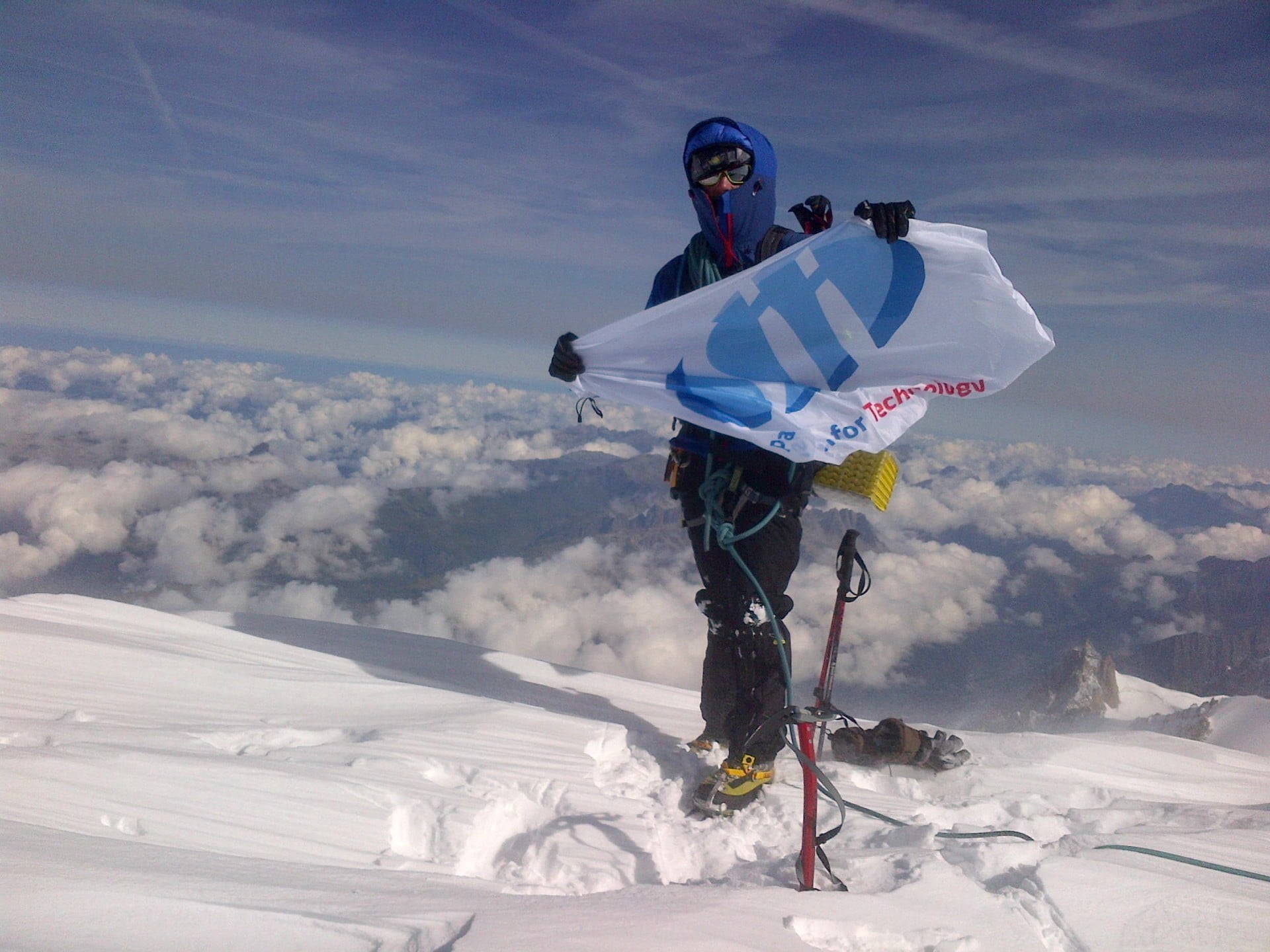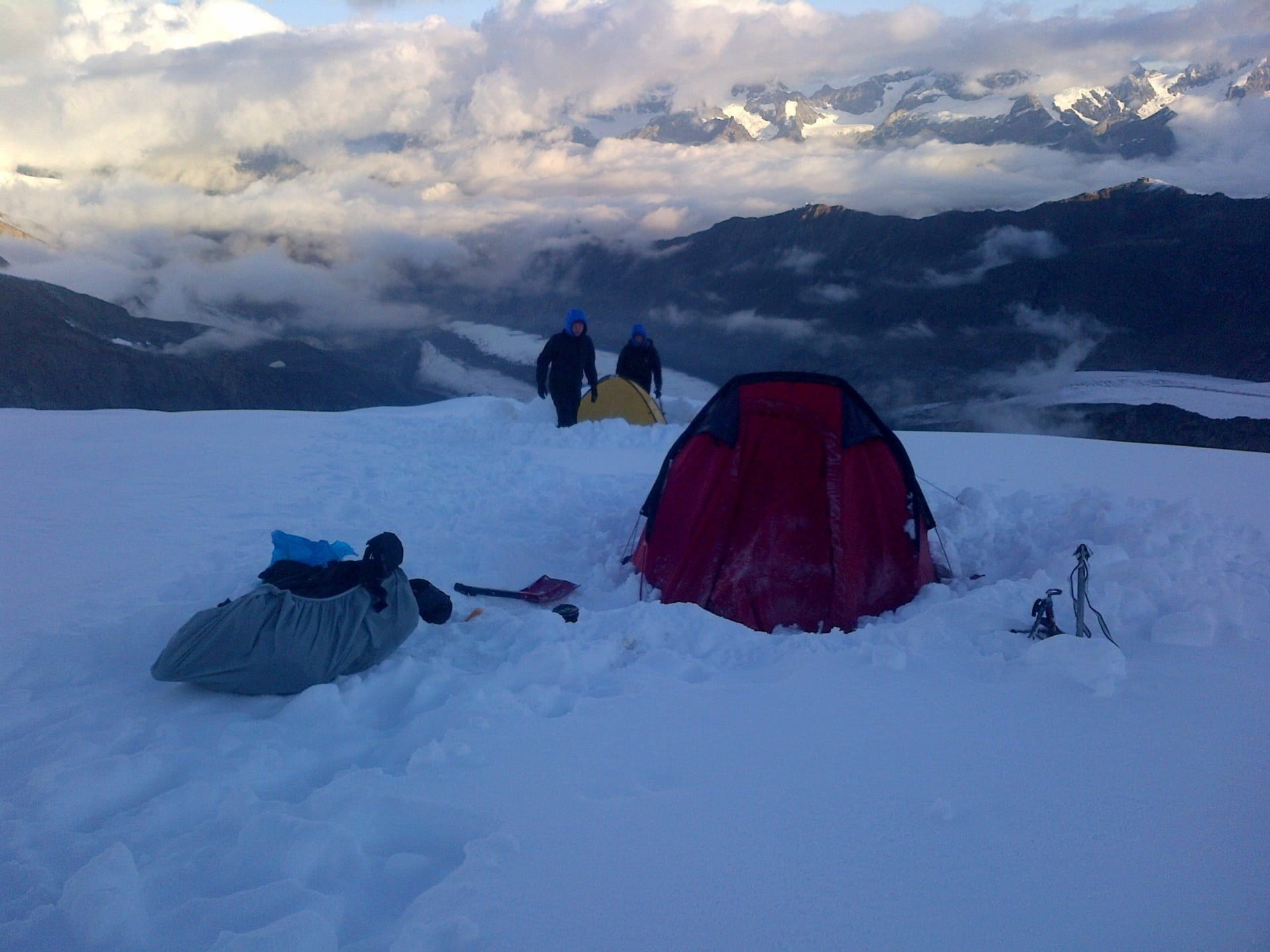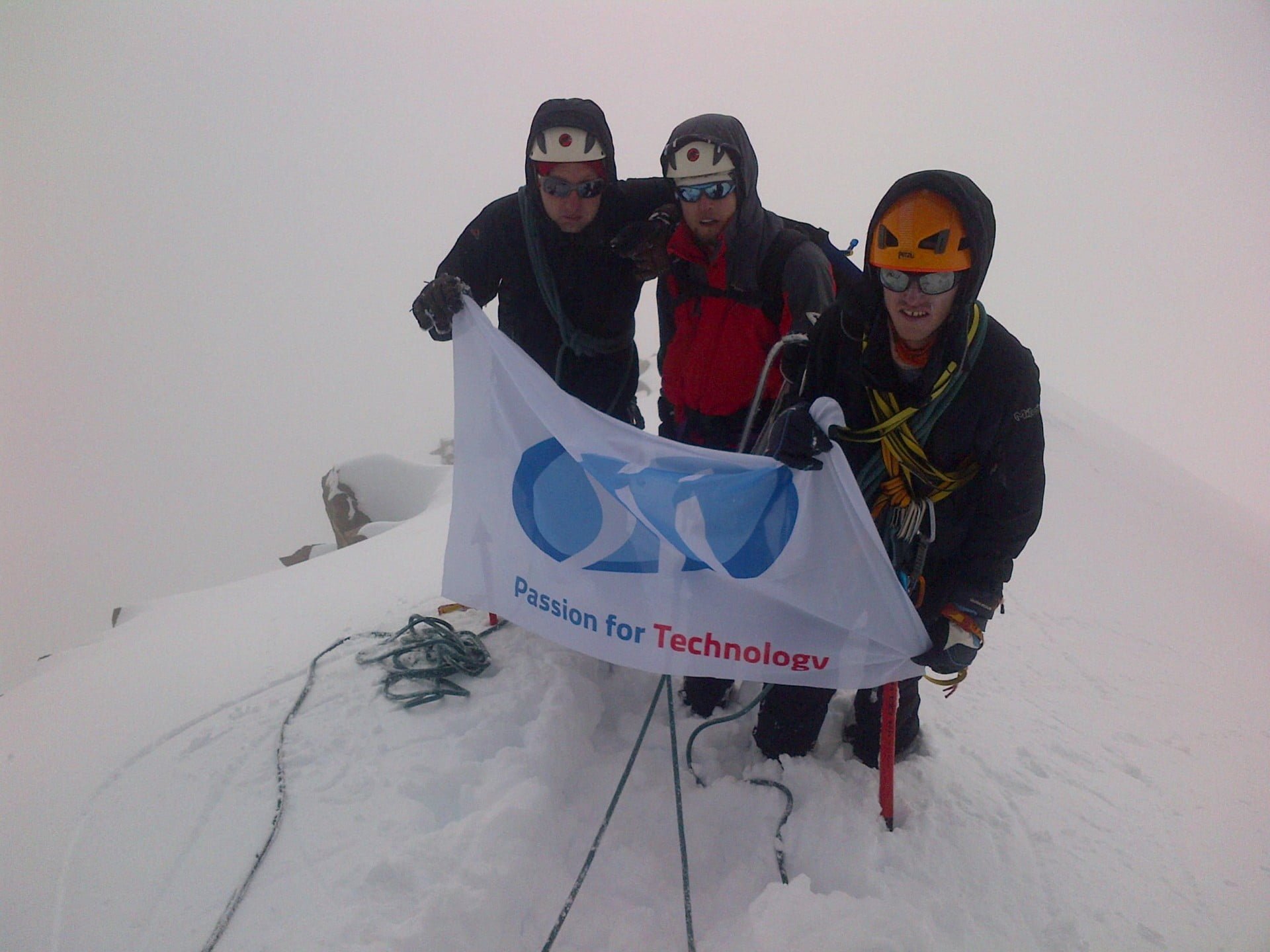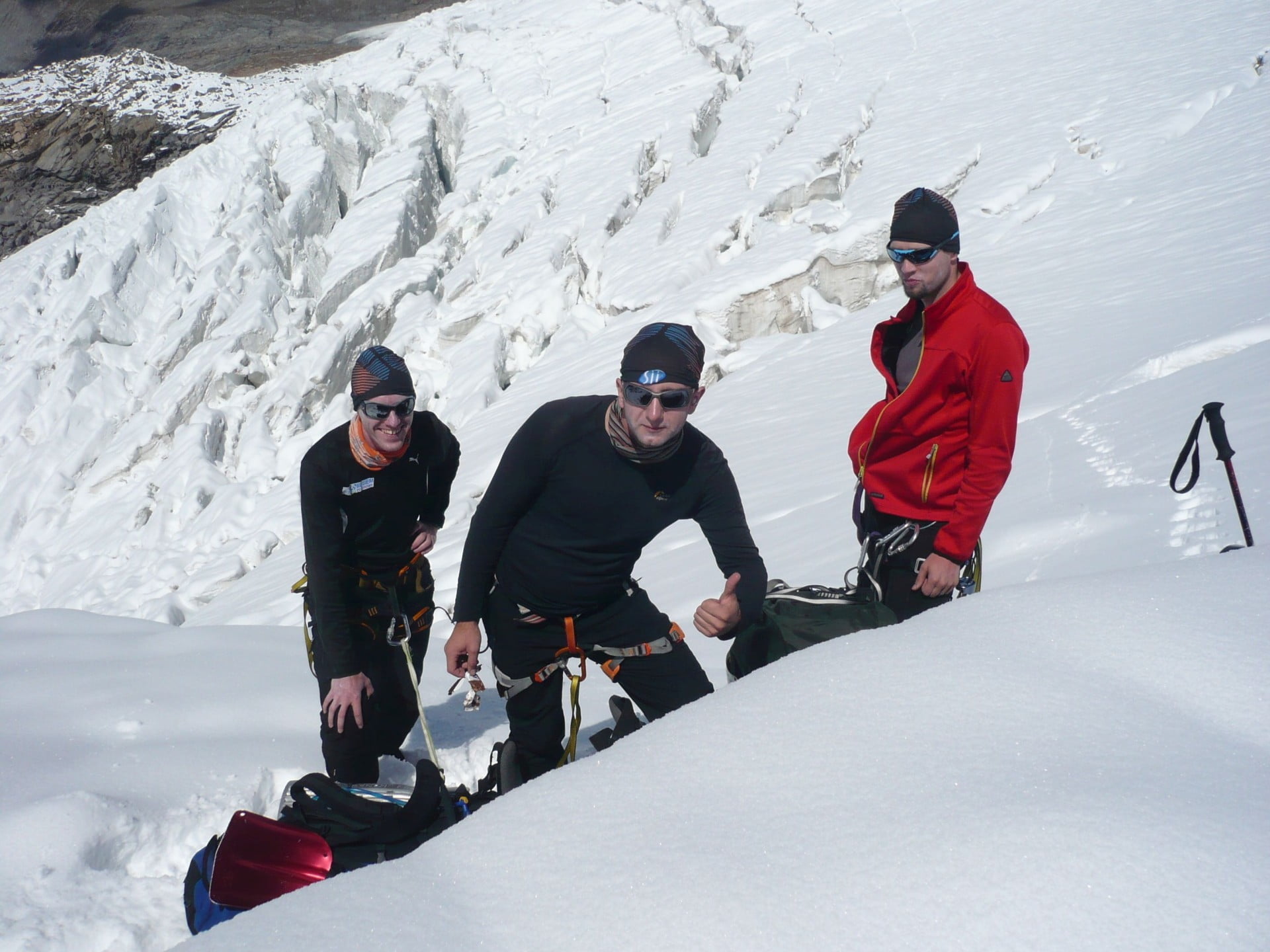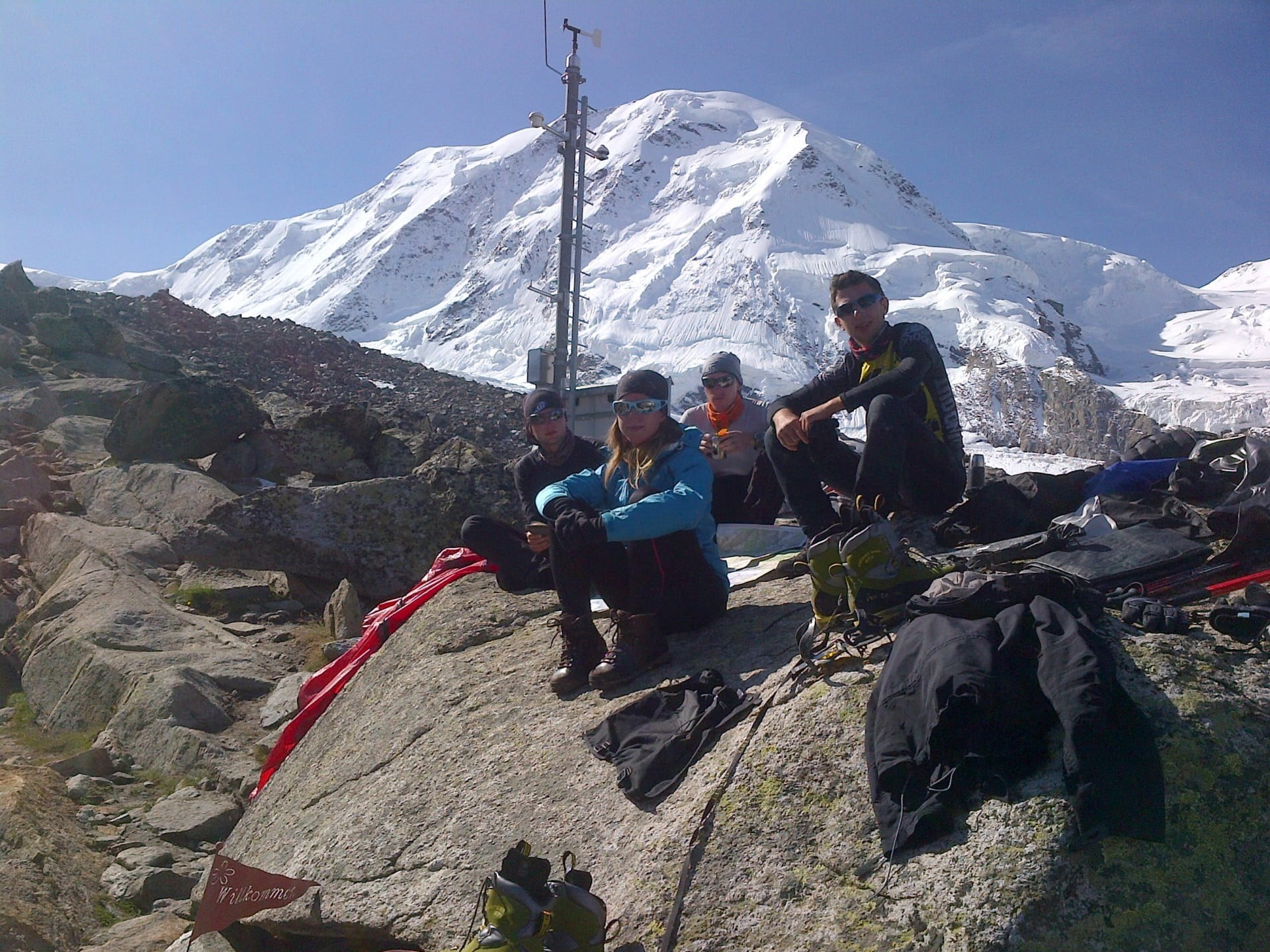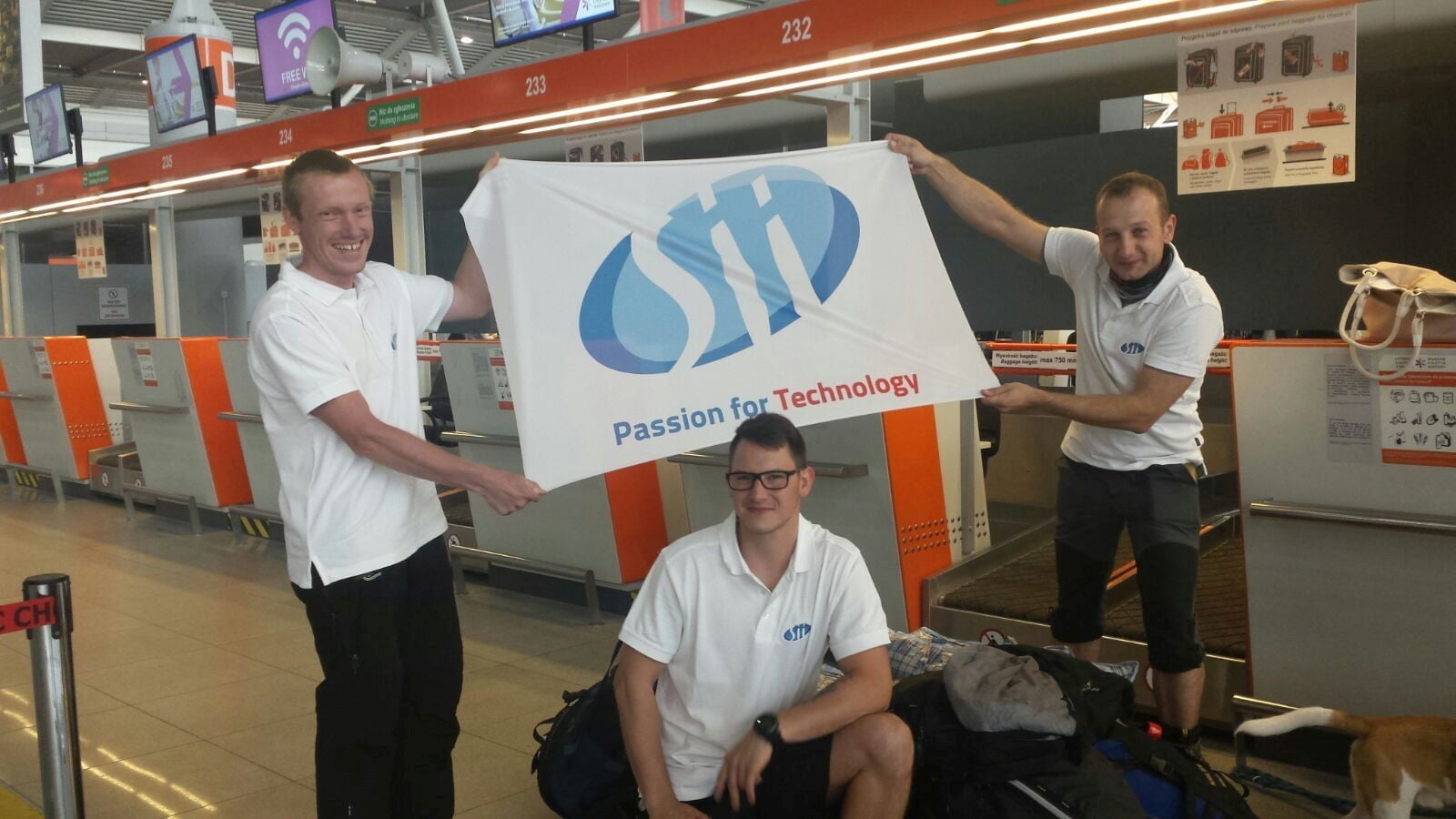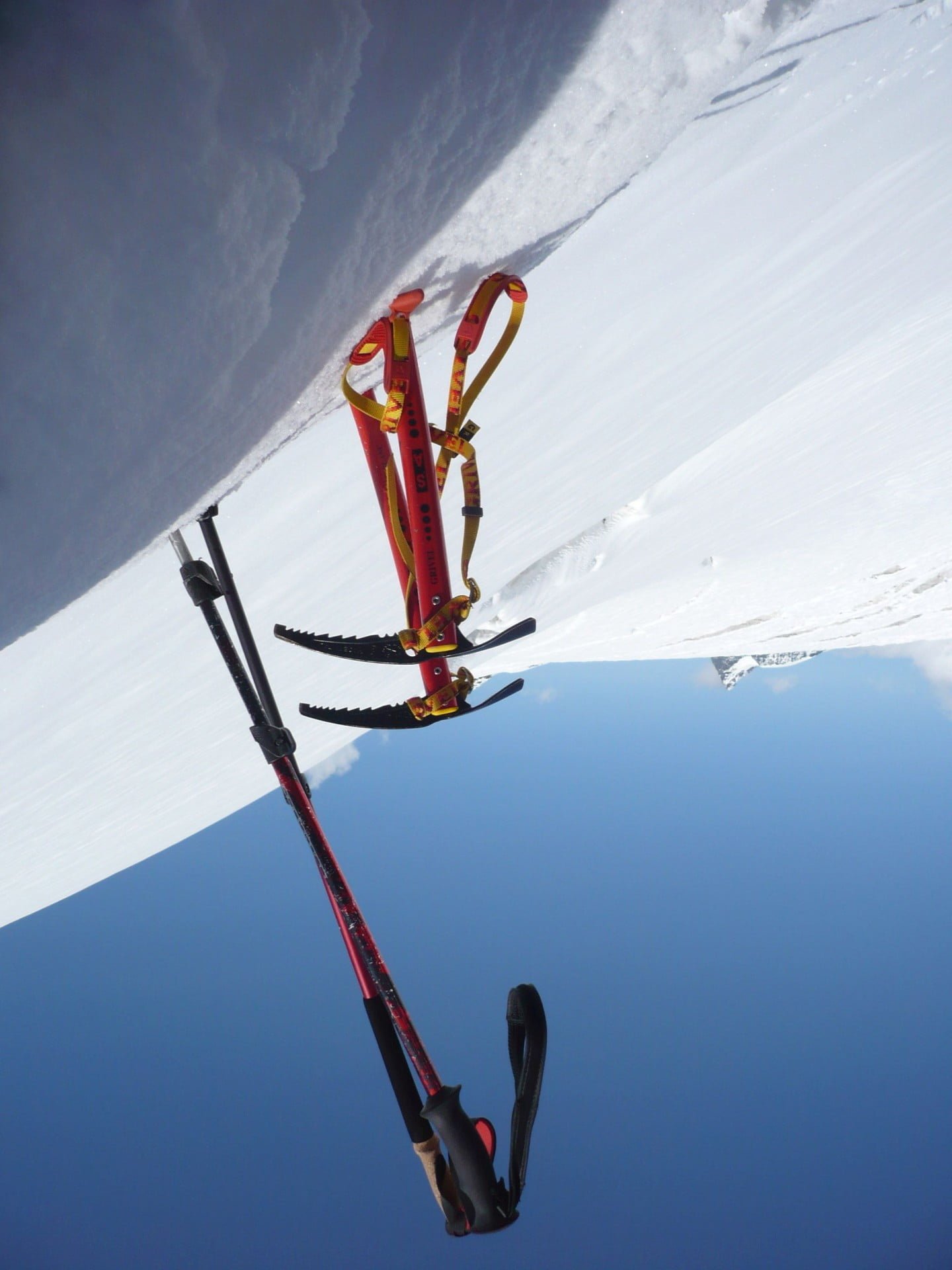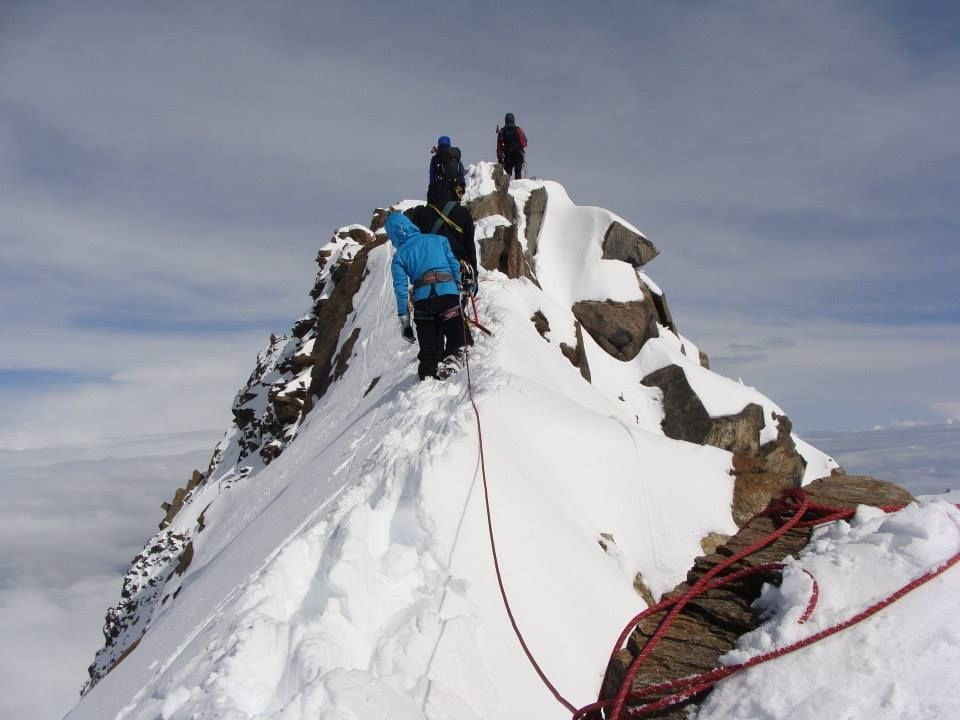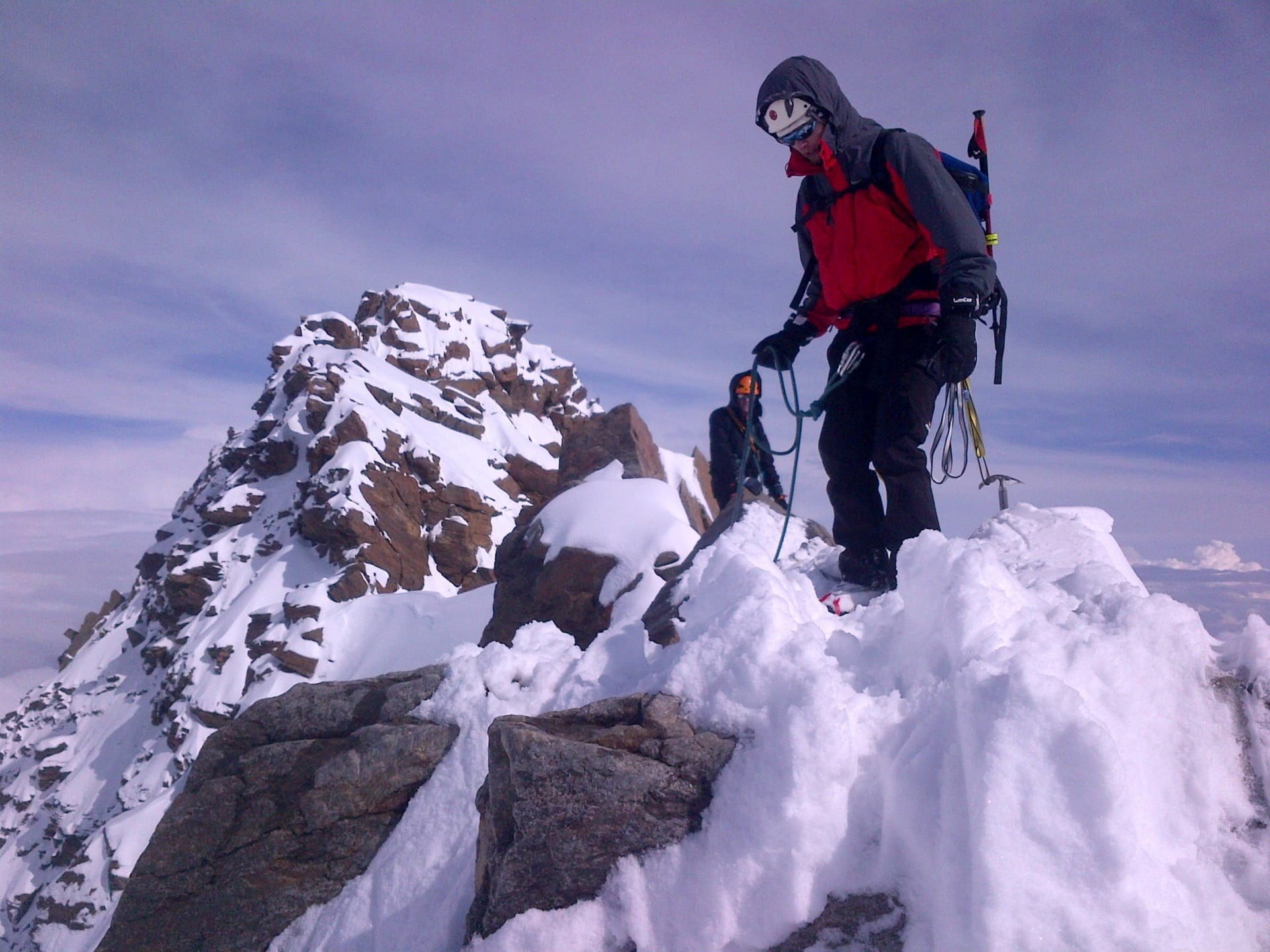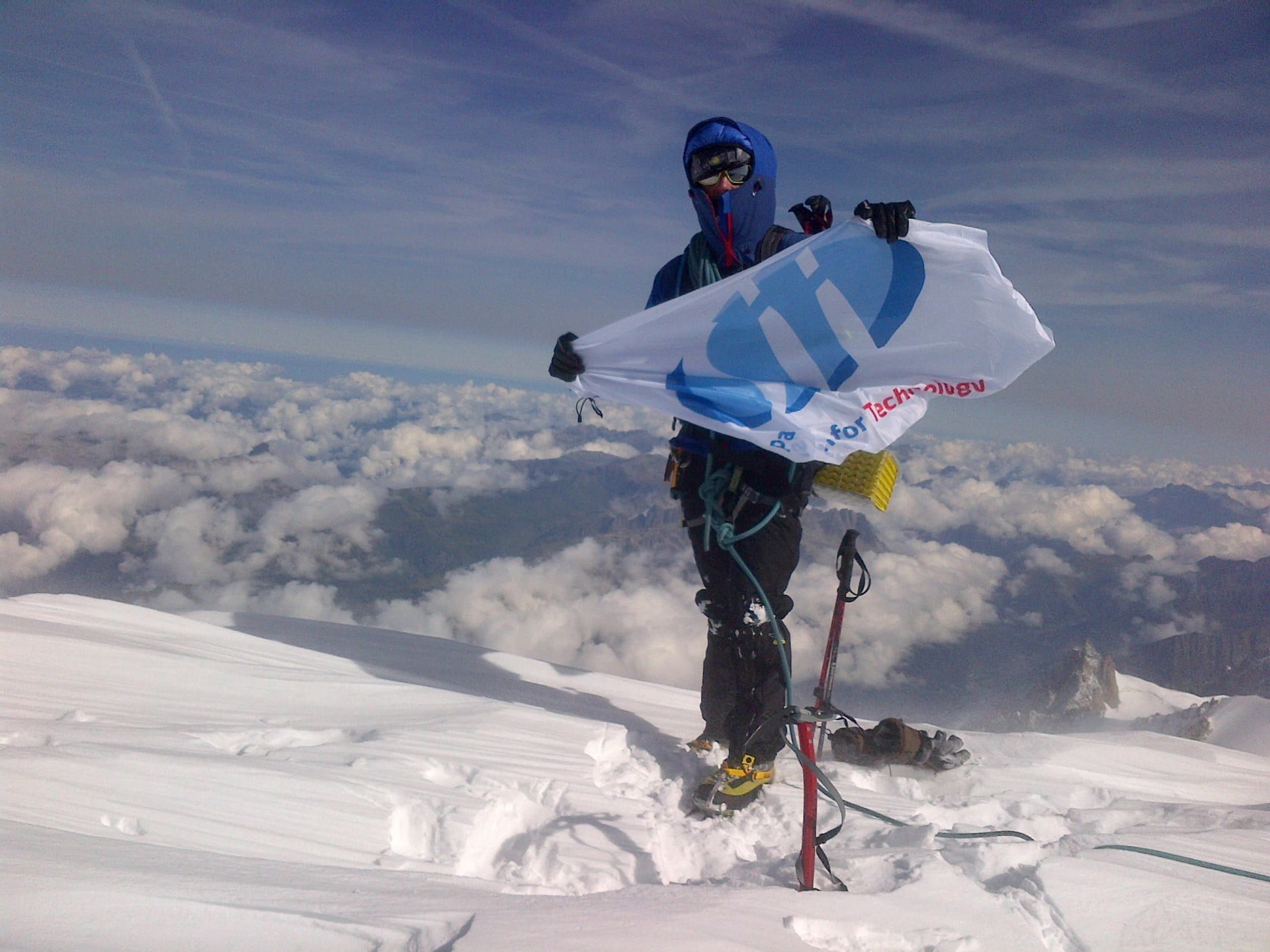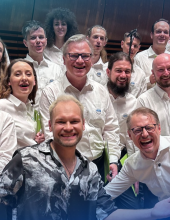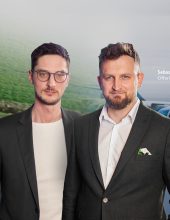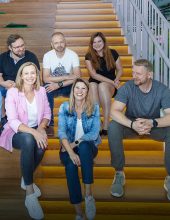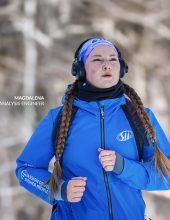Passions in Sii – Kacper Wróblewski – Sii Lodz
I joined Sii three years ago at the time of formation of the branch in Lodz, where I work to this day as a Business Manager. Patryk works for our client from Lodz – Veolia – as a SAP Consultant specialising in the area of Finance and Controlling.
He loves mountains, and recently also climbing. As we work together and share a passion, we have decided to set out on an expedition to Mont Blanc, and Sii has helped us to achieve this goal. Our colleagues from the IT trade – Marek and Maciej joined our expedition.
Climbing appeared in my life more than three years ago, but the adventure with high mountains is very fresh. For most of the life I lived close to the sea, making the trip to the other end of Poland a big hurdle. In November last year, I decided to explore the mountains. So I went with my fiancée to West and High Tatras. We reached several peaks such as Grześ, Rakoń, Wołowiec or Świstówka pass. Then I felt that I could spend every free weekend there, regardless of the weather or time of year. In January 2015, I was for the first time in the mountains in winter and realised that this is my paradise. There was a lot of snow, there was fog, avalanche risk and danger… Which is exactly the way I like it 😉 I literally fell in love with the mountains!
The idea to go to the Alps emerged spontaneously, just as most of our trips. 🙂 It was January 2015 and we tried to climb Przełęcz Mięguszowiecka pod Chlopkiem – this is one of the peaks in High Tatras, near the Black Pond. It was my first winter expedition in the high mountains.
The composition of the team for the trip was quite obvious, because I took my first steps in this hobby with Marek and Patryk. The only real question was me – the person with the least experience, but with great determination. Without hesitation, I decided to set out on this trip. Marek together with Patryk had already considered the Mont Blanc. Shortly before departure, Patryk’s good friend Maciek, both of whom had already stuck their climbing irons in the rocks of Monte Rosa, joined out team.
The expedition to the Mont Blanc required special preparations. Logistical – around February/March 2015, we purchased airline tickets, and completed and tested necessary equipment, and physical – each month starting from January 2015, we did some climbing. Each of us was doing some other sports. Marek practices long-distance running (approx. 70-100 km) or triathlon, and Patryk and I mainly play squash, which reinforces our agility, do some wakeboarding and climbing, which is also very much needed in the mountains. Physical preparations, however, were daily life for us rather than special training for the trip, because walking in the mountains is in 80% based on psyche.
The Mont Blanc and the Dufourspitze are definitely peaks that can be reached by almost anyone, but this needs reason, prior physical preparation and reliable equipment. Above all, one should complete a mountaineering course, know how to walk in the mountains not only in favourable, but also difficult conditions in the fog, when it is hard to distinguish the sky from the ground, and set the directions using a compass. It is also extremely useful to be able to assess and avoid the threat of avalanche and rescue people from under the avalanche. All these situations must be definitely tested in practice by walking in the mountains as often as possible and simulating possible variants of events. Difficult situations and climbing demanding peaks build strong psyche, which is extremely important in improving your skills, but also in extreme and unexpected situations (one of them happened to us when we were going down the Dufour). When you take care of all these elements, you can set out on more and more difficult expeditions, e.g. to the Mont Blanc.
The whole trip took us 13 days, however, as in the mountains, we had to flexibly adapt the plan to the emerging conditions.
Stage 1 – Monte Rosa massif: the Dufourspitze (4,634m above sea level)
The first and main goal was to climb the Dufourspitze, the second highest peak in Europe – 4,634m above sea level, however, to do that, we first had to acclimatise. So on the first day, we went to the unique in terms of architecture and well-known hut – Monte Rosa Hutte – located 2,883 meters above sea level, where we spent the whole next day. We just had an exploratory expedition to a height of 3,500 meters above sea level and returned to the hut.
On the next day, at approx. 5 a.m., we set out with the peak attack plan. We had to wake up early on each day of the expedition. It turned out, however, that the trail was not used for a few days and was covered by quite a large amount of snow, which completely blurred the traces of earlier expeditions, so we had to pave the way from the beginning and what is worse – to find a way through the glacier. This part took us far too much time. After more than 5 hours of wandering and finding appropriate paths, we knew we will not get to the top on that day. But still we experienced beautiful moments and emotions – surrounded by crevices, without bottom, with a width of a few to several meters, and large stretches of undisturbed nature covered with ubiquitous snow. There were only us. This landscape was everywhere. A paradise!
We decided to climb as high as we could and find a place to set up camp. Unfortunately, there was no better place than the centre of the glacier field at an altitude of 3,900m, so we spent another night there. Two small tents in the midst of tons of frozen snow. On the next day, we started a little later, about 8 in the morning and it was a day when we almost reached the first of the desired mountains – the Dufourspitze (4,634m)! The peak was almost ours – we were about 15 meters from the top, but the conditions were so uncertain that we preferred not to risk it. We had to go down quite briskly to a height of 4,300m, where we pitched camp again, because the incoming fog and heavy snowfall did not give us a chance to descend to the lower parts of the mountains. That night was special because we had to save two compatriots – Kasia and Patryk whom we met on the way up and who had planned to go down to the hut. Unfortunately, the conditions were unfavourable and the couple travelled without GPS, sleeping bags and tents, which means typical alpine climbing. We shared with them the modest space in our tents and some food.
The next morning, it turned out that the situation is no better, because more than half a meter of snow fell and again we could not see our traces, and visibility was limited to 1 m. But we had enough equipment – GPS with approximation to 5 m, so we were able to get past all the crevices and get back safely to the hut.
Stage 2 – Mont Blanc massif: the Mont Blanc (4,810m above sea level)
After the Dufourspitze, we went to Mt Ross Hutte, where we rested for 24 hours to recover and go on another trip, this time to Margharitta Hutte, where we reached a height of 4,200m. We decided, however, to go down, because Marek was very ill and height did not help him get out of the cold. Therefore, as we were prepared for different scenarios, we decided to implement plan C, or the Mt Blanc. We had to go by train to Chamonix in France. Once there, we primarily checked the weather conditions. Unfortunately, it was not too rosy: storms, strong winds and other weather surprises. It was a Saturday, but on Sunday it turned out – as in the mountains, that the weather is expected to improve, and on Monday we will be able to reach Tette Rouse hut. Just the two of us, because Maciek returned to Poland, and Marek needed a few days to recover before the demanding run around the Mt Blanc (101 km).
After reaching the hut, we decided that we would attack the peak if there are good weather conditions on the next day. We had to a very large height difference in front of us – over 1,600 meters, so we had to have a lot of strength on that day. Finally, instead of reaching Tette Rousse, we reached Gouter hut – 700 meters higher than planned, despite the rather difficult conditions.
We did so because we knew that this would facilitate the peak attack and we would not have to cover a very difficult and rocky passage from Falling Rocks at night, where there had been a fatal accident in the previous 3 months. Setting off on the next day in the morning, we were not alone – 4 other teams were just behind us. In sum, Patryk and I cleared most of the way to the top, and Spaniards and Russians helped us a little, however, only us and Slovaks climbed the very top of the Mt Blanc. We stood on the roof of Europe as the first team of the day.
The plan was very simple – go to see the Monte Rosa massif and climb the Dufourspitze, and when the conditions are good, then try your hand on the Matterhorn – plan B, or the Mont Blanc – plan C. We can say that we have completed our goal in 90% – we nearly implemented plan A and plan C, so we are very pleased with it, although it is known that the spirit wants more. 🙂
During our trip we also had some risky situations, from wandering about the glacier lake among crevasses, some of which were visible and some hidden under the snow, and from time to time someone plunged his leg into one of them, to narrow ridges and slippery, steep rocks. So we had to weigh our desire and ambition between the conditions and capabilities of our organisms. This in turn makes the mountains so unusual and interesting.
Climbing the Dufourspitze (4,634 m) – from departure from the hut, i.e. about 5 a.m., until reaching the peak at about 3 p.m. on the next day, it took us some 34 hours including sleep. And we were going down from 4 p.m. to 3-4 p.m. on the next day, that is 24 hours. With good conditions and cleared trail, you could do it in one day, but such walking is not so attractive 🙂
Climbing the Mont Blanc (4,810 m) started from Refuge du Gouter hut – 3,835m above sea level. We set off at about 4.20 a.m. as the first team (behind us there were Spaniards, Britons, Russians, Slovaks and Bulgarians) and so we were the first team to reach the peak at about 10.30 a.m. At 5.30 p.m., we were more than 2,300 meters below, waiting for the cableway to return to the valley 🙂
As you can see, every mountain has its own rules, and we have to adapt to them. It is important from which height you start, sometimes it is better to set off from a higher altitude, and some other time – you can do it in 2 stages and spend a night in the camp.
Efforts and obstacles encountered along the way are compensated by the emotions and moments that are difficult to describe and tell. The feelings which accompany you after reaching the top are certainly freedom, joy and great satisfaction, and all the rest: fatigue, cold, pain and lack of oxygen, is less important.
Mountains, climbing, wakeboarding, snowboarding and many other sports are a very important part of my life. They give me the feeling that nothing is impossible, that hard work and ambition allow you to push the limits. Sport is a passion for me, giving me a lot of positive energy. Thanks to it I have a sense of lightness and eternal youth, but also the ability to explore the world.

